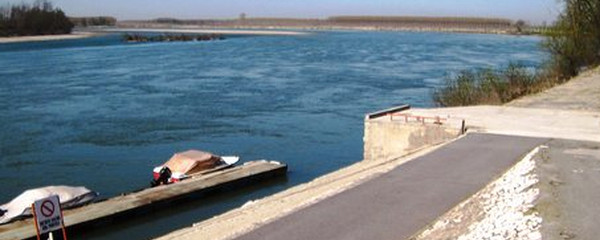Navigation

Stimmungsbild bei Orio Litta

Entwässerungskanal bei Orio Litta
Soon after leaving Sopravino, we cross another river which flows into the Po from the South, the Trebbia river, which we cross over the «Ponte Trebbia». Then, we hike East again through the suburbs of today's destination Piacenza, the capital of the local province with the same name.
Piacenza was founded by Etruscans and became a roman colony in 219 B.C., a colony on the Via Emilia. This is a city worth spending a day to explore the Piazza Dei Cavalli, the gothic church San Francesco built with bricks, the cathedral and much more.
Note(s)
The «Via Francigena» is one of the 3 main christian pilgrimage trails of the Middle Ages, the main axis leading from Canterbury to Rome. This documentation currently covers the most frequented section from Lausanne to Rome.
Anmerkungen
Die «Via Francigena» ist einer der 3 christlichen Pilgerwege des Mittelalters, dessen Hauptachse von Canterbury in England nach Rom führt. Diese Dokumentation umfasst vorerst den Abschnitt von Pontarlier nach Rom.
Tipp des Autors
Sollte die Fähre ab Corte Sant´Andrea nicht in Betrieb sein, so bringt uns die Variante Guzzafame ebenfalls nach Piacenza, und zwar per pedes und erst noch kostenlos.
Orte entlang des Weges
Orio Litta - Corte Sant'Andrea - Fähre Po - Fiume Po - Soprarivo - Calendasco - Zerbione - Arena - Incrociata - Gazza - Contrebbia Nuova - Malpaga - Case Ponte Trebbia - Fiume Trebbia - Sant'Antonio a Trebbia - Piacenza









